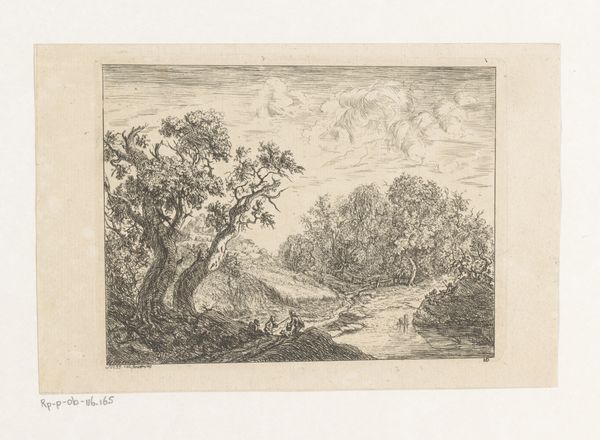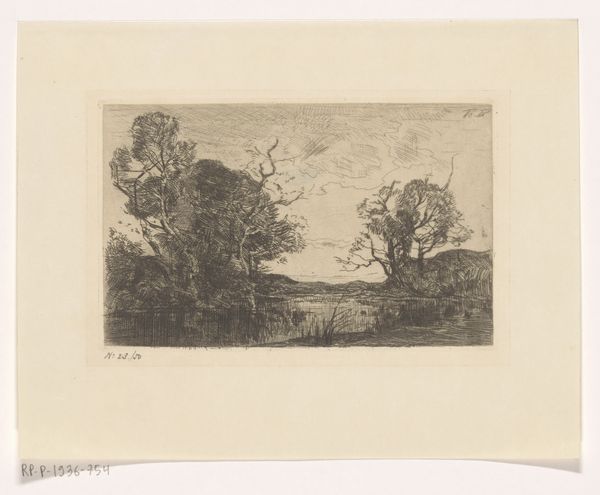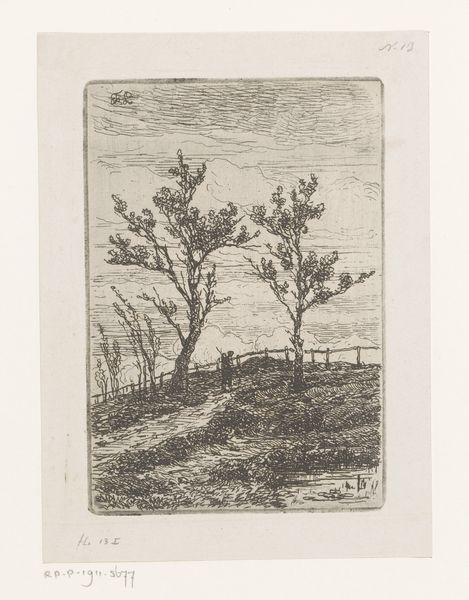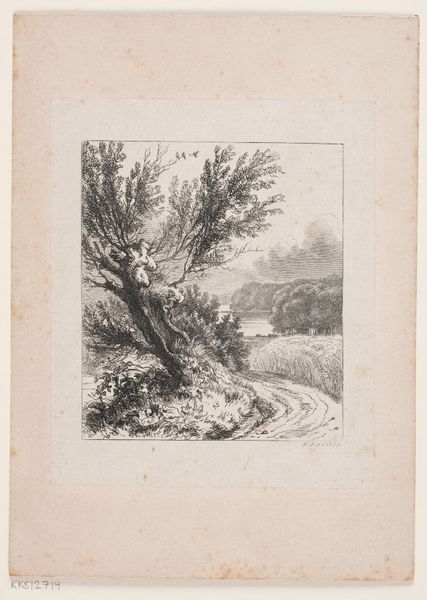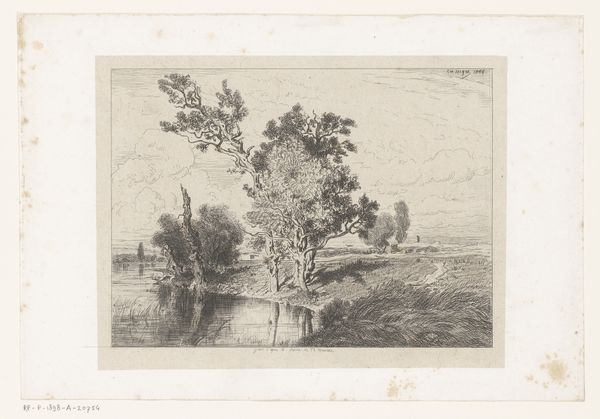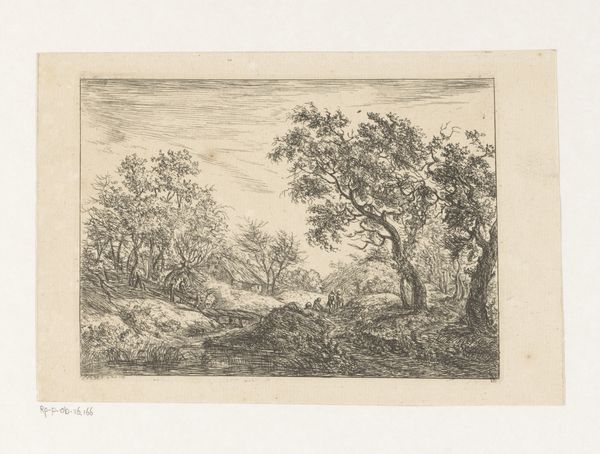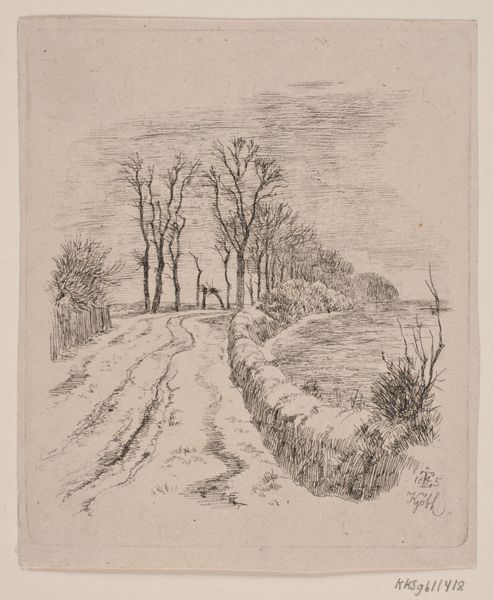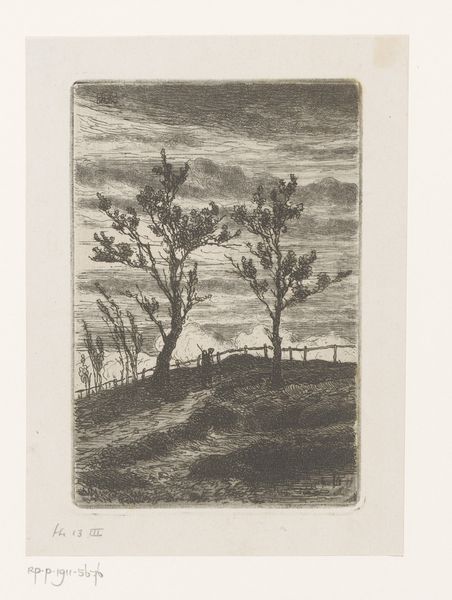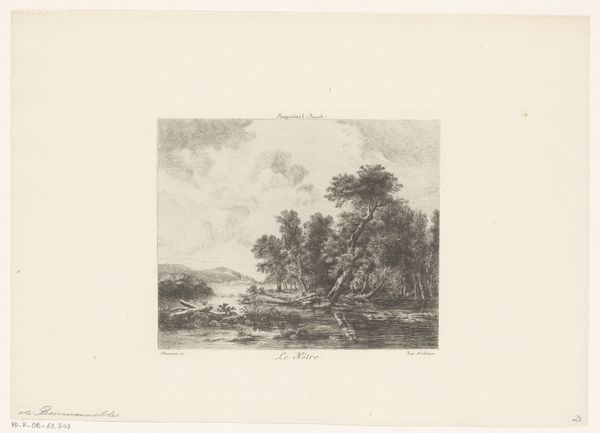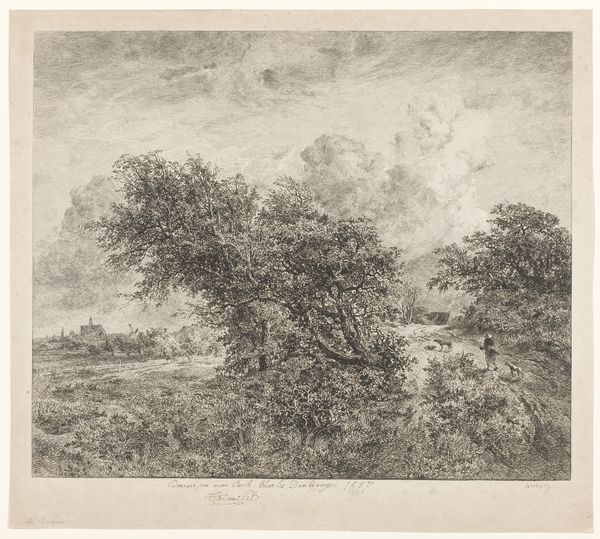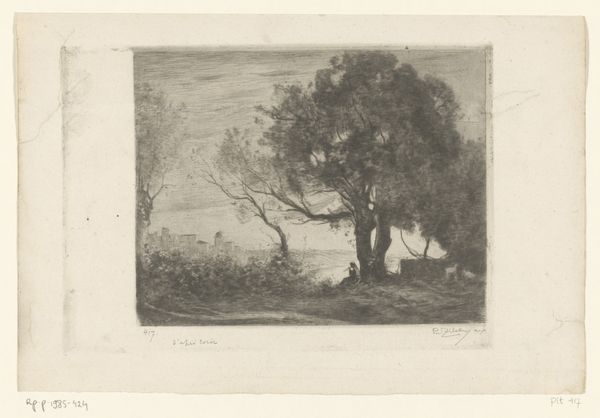
print, etching, photography
#
aged paper
# print
#
etching
#
old engraving style
#
landscape
#
photography
#
realism
Dimensions: height 159 mm, width 118 mm
Copyright: Rijks Museum: Open Domain
Curator: Standing before us is "Landschap bij Meerenberg," a landscape etching by Carel Nicolaas Storm van 's-Gravesande, created sometime between 1880 and 1884. It's currently held at the Rijksmuseum. Editor: Immediately, I'm struck by the intimacy of the piece. The monochromatic palette and the dense network of etched lines create a wonderfully melancholic atmosphere, almost like a faded memory. Curator: The beauty of this etching lies in its skillful rendering of light and shadow. Van 's-Gravesande’s meticulous technique allows him to capture a specific moment in time—note how he employs varying line weights to convey depth and texture in the foliage and sky. This creates a pictorial space filled with tranquility. Editor: And look at the social context! Van 's-Gravesande's realism mirrors the increasing popularity of landscape painting at the time and speaks to a broader romanticization of the pastoral. This trend can be examined relative to the rapid industrialization affecting Dutch society. These scenes represented a retreat, idealized of course. Curator: I see your point, but also think of this in formal terms; consider the fence, for instance—it elegantly guides our eye across the composition toward the distant field. Notice how the composition guides us, playing on ideas of perspective to pull the eye to the trees behind it. Editor: Absolutely, and it highlights the curated aspect of this "natural" scene. Fences are human constructions and the etching’s emphasis underscores that the depiction of the landscape always mediates a dialogue between humanity and nature, or ownership. These landscape are not inherently “neutral.” Curator: A valuable consideration. Van 's-Gravesande's mastery resides in his ability to subtly manipulate the viewer's perception, using established art historical compositions, in which depth and structure create an emotional effect. Editor: Indeed. Viewing "Landschap bij Meerenberg" through a historical lens broadens our perception of landscapes as cultural records of human ideologies as well. A scene in Dutch history but captured, interpreted and mediated for the audiences of the time. Curator: Analyzing this scene using these frameworks reveals levels of interpretation and allows you to enjoy van 's-Gravesande’s elegant print on an intellectual as well as sensorial level.
Comments
No comments
Be the first to comment and join the conversation on the ultimate creative platform.
